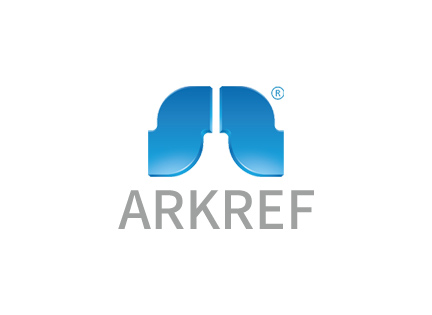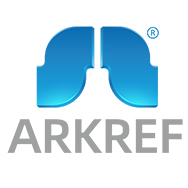The Energy Efficiency Journey: Exploring ARKREF CO₂ Transcritical Refrigeration Unit and Traditional Systems

A Cool Introduction to Refrigeration
Refrigeration is an essential part of our daily lives, playing a crucial role in preserving food, medicine, and other perishable items. Refrigeration ensures that products remain fresh and safe for consumption, making it a vital component of modern society.
In recent years, there has been a significant shift towards greener solutions in the field of refrigeration. This shift is driven by the growing awareness of environmental issues and the need to reduce Refrigeration's carbon footprint. As a result, innovative technologies and sustainable practices have emerged to address these concerns.
The demand for more energy-efficient and environmentally friendly refrigeration systems has led to the development of advanced solutions such as the ARKREF CO₂ transcritical refrigeration unit. These systems are designed to minimize environmental impact while maximizing performance, marking a significant step forward in the industry's evolution.
The Basics of ARKREF CO₂ Transcritical Refrigeration Units
Understanding Transcritical Refrigeration
Refrigeration technology has evolved significantly over the years, and one of the most innovative advancements is transcritical refrigeration. This cutting-edge approach to cooling systems operates at a unique set of pressures and temperatures, distinguishing it from traditional methods.
What Makes It "Transcritical"?
Transcritical refrigeration earns its name from the nature of its cooling cycle. Unlike subcritical systems that rely on phase changes between liquid and gas, transcritical systems operate above the critical point of the refrigerant. This means that both liquid and gas coexist during the heat rejection process, resulting in distinct thermodynamic properties.
Why CO₂?
The choice of refrigerant is crucial in transcritical systems, and CO₂ has emerged as a top contender for several reasons. Firstly, CO₂ is abundant, inexpensive, and non-toxic, making it an environmentally responsible choice. Additionally, its thermodynamic properties are well-suited for transcritical operation, ensuring optimal efficiency and performance.
The ARKREF Difference
When it comes to sustainable refrigeration solutions, ARKREF stands out as a leader in the industry with its CO₂ transcritical units.
Energy Efficiency at Its Core
One of the defining features of ARKREF's CO₂ transcritical units is their exceptional energy efficiency. By harnessing the unique properties of CO₂, these units can achieve impressive levels of cooling while minimizing energy consumption. This not only reduces operational costs but also contributes to a greener and more sustainable future.
Environmental Benefits
In addition to energy efficiency, ARKREF's CO₂ transcritical units offer significant environmental benefits. The use of CO₂ as a refrigerant minimizes greenhouse gas emissions and aligns with global efforts to combat climate change. Furthermore, these units pave the way for businesses to adopt eco-friendly practices without compromising on performance or reliability.
Traditional Refrigeration Systems: A Quick Overview
Traditional refrigeration systems have been the cornerstone of cold storage and cooling processes for decades, providing essential support for various industries. Understanding how these systems operate and their environmental impact is crucial in evaluating the transition towards more sustainable solutions.
How They Work
The Role of Refrigerants
Traditional refrigeration systems rely on a circulating refrigerant to facilitate the heat exchange process. The refrigerant absorbs heat from the interior space, transitions into a gaseous state, and then releases the heat outside as it condenses back into a liquid. This continuous cycle maintains the desired temperature within the enclosed environment.
Common Types of Traditional Systems
Several types of traditional refrigeration systems are prevalent in commercial and industrial settings. These include vapor compression systems, absorption refrigeration, and air cycle refrigeration. Each system utilizes distinct mechanisms to achieve cooling, catering to specific operational requirements.
The Environmental Impact
The Problem with Traditional Refrigerants
One of the primary concerns associated with traditional refrigeration systems is the use of synthetic refrigerants with high global warming potential (GWP). These substances contribute significantly to greenhouse gas emissions when released into the atmosphere, exacerbating climate change and environmental degradation.
Energy Consumption Concerns
Traditional refrigeration systems often exhibit higher energy consumption due to inefficiencies in their cooling processes. The reliance on non-renewable energy sources further amplifies their environmental impact, leading to increased carbon emissions and resource depletion.
In contrast to modern transcritical units like ARKREF's CO₂ system, traditional refrigeration methods pose substantial challenges in achieving optimal energy efficiency and minimizing environmental harm.
Comparing ARKREF CO₂ Units with Traditional Systems
Energy Efficiency Face-Off
When comparing ARKREF CO₂ transcritical units with traditional refrigeration systems, the difference in energy efficiency becomes evident. The cooling power and long-term savings of each system play a significant role in determining their overall environmental impact and operational cost-effectiveness.
Cooling Power Comparison
The ARKREF CO₂ transcritical units boast impressive cooling power, effectively maintaining optimal temperatures within commercial and industrial settings. Their advanced technology harnesses the thermodynamic properties of CO₂, ensuring efficient heat exchange and reliable performance. In contrast, traditional systems may struggle to achieve the same level of cooling efficiency due to inherent limitations in their design and refrigerant choice.
In real-world applications, the superior cooling power of ARKREF units translates to enhanced product preservation, reduced spoilage, and improved operational productivity. Businesses can rely on these innovative units to meet their refrigeration needs while minimizing energy consumption.
Long-Term Savings
Investing in ARKREF CO₂ transcritical units offers substantial long-term savings for businesses. The exceptional energy efficiency of these units results in lower operational costs, making them a financially prudent choice over time. By reducing energy consumption without compromising performance, businesses can allocate resources more effectively and enhance their overall sustainability efforts.
In contrast, traditional refrigeration systems may incur higher operational expenses due to increased energy consumption and maintenance requirements. The long-term savings potential of ARKREF CO₂ transcritical units positions them as a compelling option for businesses seeking cost-effective and environmentally responsible refrigeration solutions.
Environmental Impact Analysis
GWP (Global Warming Potential) Showdown
The environmental impact of refrigeration systems is a critical consideration in evaluating their sustainability. When comparing ARKREF CO₂ transcritical units with traditional systems, the global warming potential (GWP) emerges as a key point of differentiation.
CO₂, the refrigerant used in ARKREF transcritical units, exhibits minimal GWP compared to synthetic refrigerants commonly found in traditional systems. This significantly reduces the overall carbon footprint associated with cooling operations, aligning with global efforts to mitigate climate change and environmental degradation.
In contrast, traditional refrigeration systems often rely on high-GWP synthetic refrigerants that contribute substantially to greenhouse gas emissions. This poses a significant environmental challenge and underscores the importance of transitioning towards greener technologies such as ARKREF CO₂ transcritical units.
The Future of Refrigerants
As the industry continues to prioritize sustainability and energy efficiency, the future of refrigerants is undergoing a transformative shift. Innovations centered around environmentally friendly alternatives are driving advancements in cooling technology. ARKREF's commitment to utilizing CO₂ as a primary refrigerant sets a precedent for sustainable practices that prioritize both performance and environmental responsibility.
The transition towards eco-friendly refrigerants represents a pivotal step in shaping the future of refrigeration. By embracing solutions like ARKREF CO₂ transcritical units, businesses can contribute to a more sustainable future while reaping the benefits of enhanced operational efficiency and reduced environmental impact.
The Future of Refrigeration: What's Next?
Innovations on the Horizon
The future of refrigeration holds exciting prospects as the industry continues to embrace technological advancements and sustainable practices. Innovations on the horizon are poised to revolutionize cooling systems, offering enhanced efficiency and environmental responsibility.
Cutting-edge research and development initiatives are exploring novel approaches to Refrigeration, leveraging advanced materials and design concepts. From next-generation compressors to intelligent temperature control systems, these innovations aim to optimize energy usage and reduce environmental impact. Additionally, the integration of smart sensors and data analytics is set to enhance operational monitoring and performance optimization, ushering in a new era of precision cooling.
Furthermore, advancements in thermal insulation materials and construction techniques are poised to improve the overall energy efficiency of refrigerated spaces. These developments will contribute to minimizing heat transfer losses and maintaining stable temperatures with reduced energy consumption.
Making the Switch to Greener Technologies
The transition towards greener technologies in Refrigeration represents a pivotal shift towards sustainability and environmental stewardship. Businesses across various industries are increasingly recognizing the importance of adopting eco-friendly refrigeration solutions that prioritize both performance and ecological responsibility.
By making the switch to greener technologies, organizations can significantly reduce their carbon footprint while enhancing operational efficiency. This shift involves embracing sustainable refrigerants with minimal environmental impact, such as CO₂, which has emerged as a leading choice for transcritical refrigeration units.
Moreover, the adoption of renewable energy sources to power refrigeration systems is gaining traction as part of this transition. Solar, wind, and geothermal energy offer sustainable alternatives to traditional power sources, further aligning with efforts to minimize environmental harm.
As businesses continue to prioritize sustainability in their operations, the widespread adoption of greener technologies in Refrigeration is expected to drive positive change across various sectors, contributing to a more environmentally conscious future.
See Also
Discovering the Breakthroughs of ARKREF CO₂ Transcritical Refrigeration
Optimizing Energy Usage with the ARKREF CO₂ Transcritical Refrigeration System
Uncovering the Technology Behind ARKREF CO₂ Transcritical Refrigeration
Complete Overview of the ARKREF CO₂ Transcritical Refrigeration Unit
Comparing ARKREF CO₂ Transcritical Refrigeration with Conventional Systems

